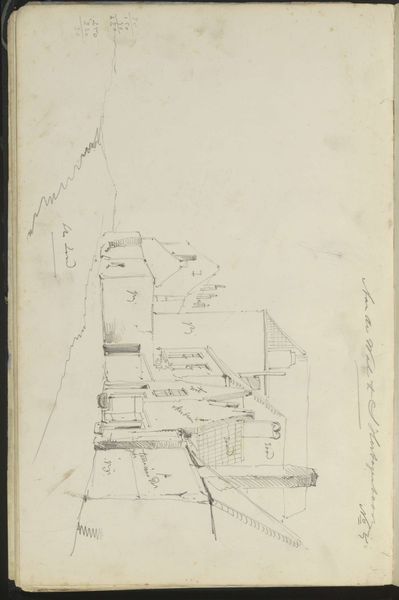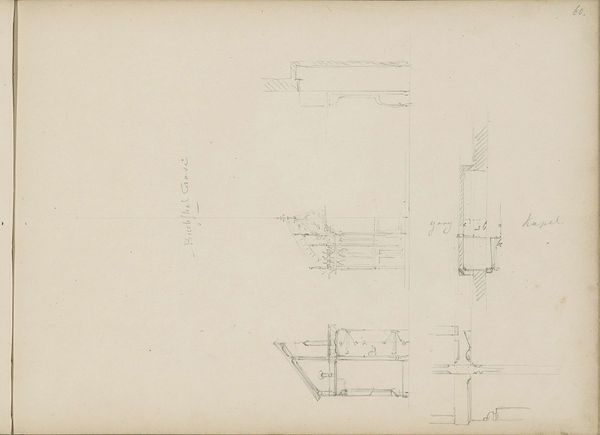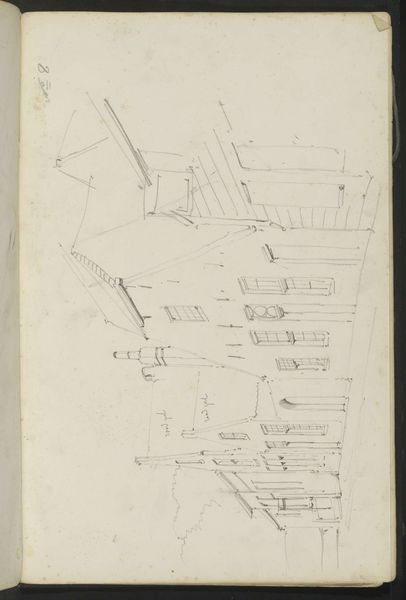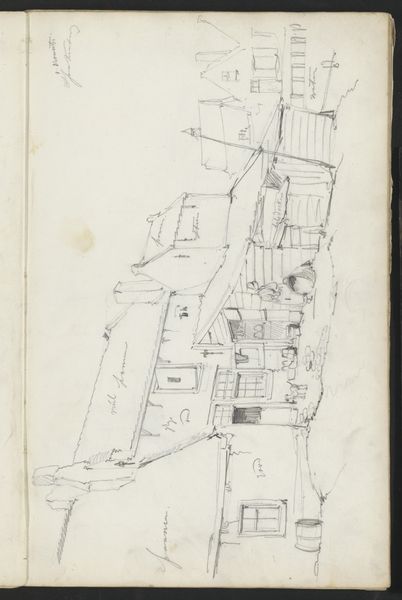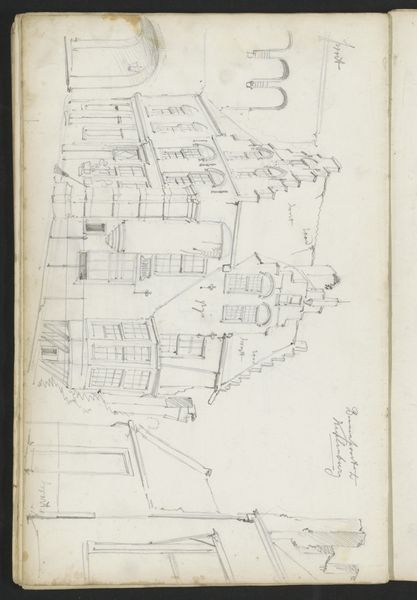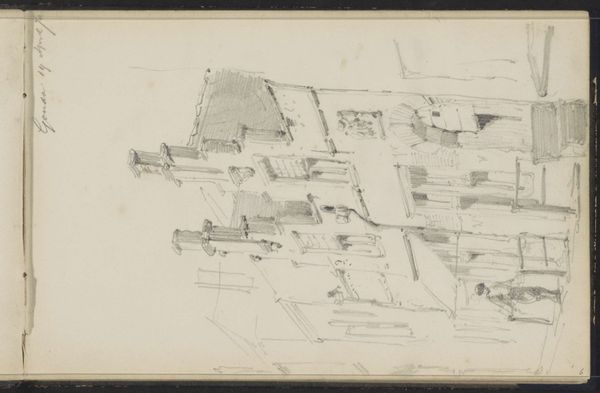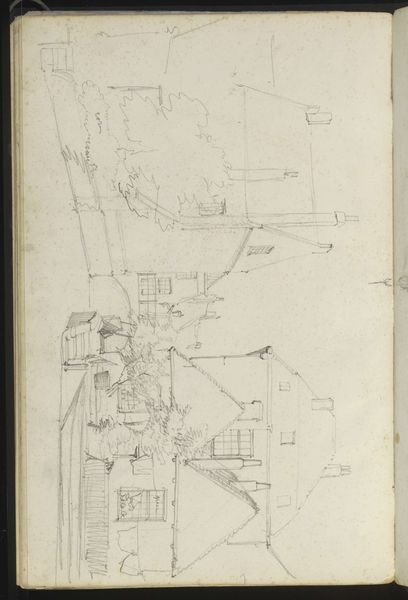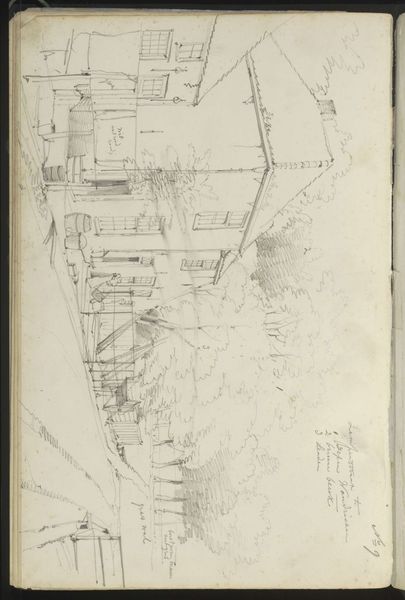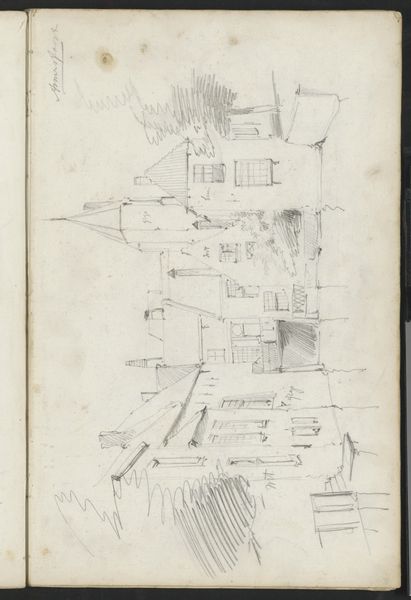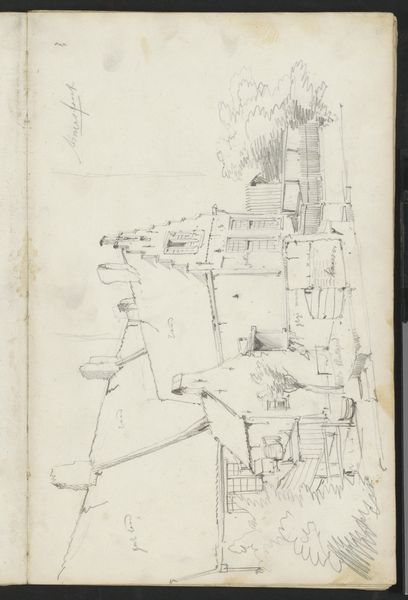
Rooms-katholieke kerk aan de Roomsche Kerkstraat te Heusden 1849 - 1895
0:00
0:00
willemkoekkoek
Rijksmuseum
drawing, ink, pencil
#
drawing
#
dutch-golden-age
#
landscape
#
ink
#
pencil
#
cityscape
#
realism
Copyright: Rijks Museum: Open Domain
Curator: Looking at Willem Koekkoek's drawing, made sometime between 1849 and 1895, I find myself strangely drawn to its melancholic stillness. "Rooms-katholieke kerk aan de Roomsche Kerkstraat te Heusden," isn't exactly a snappy title, but it does what it says on the tin, I suppose. It depicts a Roman Catholic church, presumably in Heusden. Editor: Immediately, what strikes me is the sparseness. There's an almost unsettling emptiness around this church, devoid of human activity. I'm interested in this deliberate choice, the ways in which Koekkoek frames institutional presence against, perhaps, a lack of communal engagement, maybe even a quiet resistance. Curator: That’s a fascinating take! For me, there’s a haunting simplicity in the composition, isn't there? The church, rendered so precisely in pencil and ink, rises starkly against a washed-out sky. It's so delicate; the man certainly had a deft hand when wielding the pencil. But is it loneliness or simply a quiet reverence that the artwork evokes? Editor: Perhaps the distinction between loneliness and reverence is a subtle but critical one. The use of grayscale emphasizes a historical perspective, almost ghosting the community. I wonder how the socio-political landscape of Heusden informed Koekkoek's perception. Did it feel alienating? Was Koekkoek perhaps pointing at institutional failure, or its disconnect from the common people? Or could it be understood through a lens of power— the imposing church literally casting shadows? Curator: It’s easy to read it that way, particularly with our modern sensibilities. Yet, there’s something inherently timeless in these renderings. Looking at his skillful depiction of Dutch Golden Age landscapes, and then seeing this snapshot… you can’t deny he’s capturing something true, regardless of what spin we want to put on it now. I appreciate your points about social context, for sure, but I find peace in simply witnessing history reflected in the artist's line work. Editor: And it's this dialogue between observation and critique, artist and audience, past and present, that I believe truly unlocks an artwork's profound resonance. Curator: Exactly! In the end, aren’t we all just trying to find a piece of ourselves reflected back? Even if it's through the melancholic facade of a forgotten church.
Comments
No comments
Be the first to comment and join the conversation on the ultimate creative platform.
